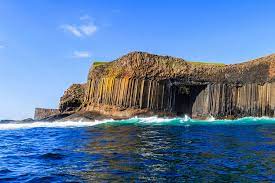
Nestled on the remote island of Staffa, off the western coast of Scotland, lies a natural wonder that has captivated the imaginations of artists, poets, and musicians for centuries. Fingal’s Cave, named after the legendary Celtic hero Fingal, stands as a testament to the awe-inspiring beauty and mystery of the natural world. Its enchanting hexagonal basalt columns, formed by ancient volcanic activity, have attracted visitors and inspired countless works of art and literature.

Fingal’s Cave is renowned for its unique geological formation. The columns, composed of basalt lava, were created around 60 million years ago during a period of intense volcanic activity. As the lava cooled, it contracted and fractured, forming the distinctive hexagonal pillars that make up the cave’s interior walls. The columns, varying in height and width, create a breathtaking visual spectacle that leaves visitors in awe.
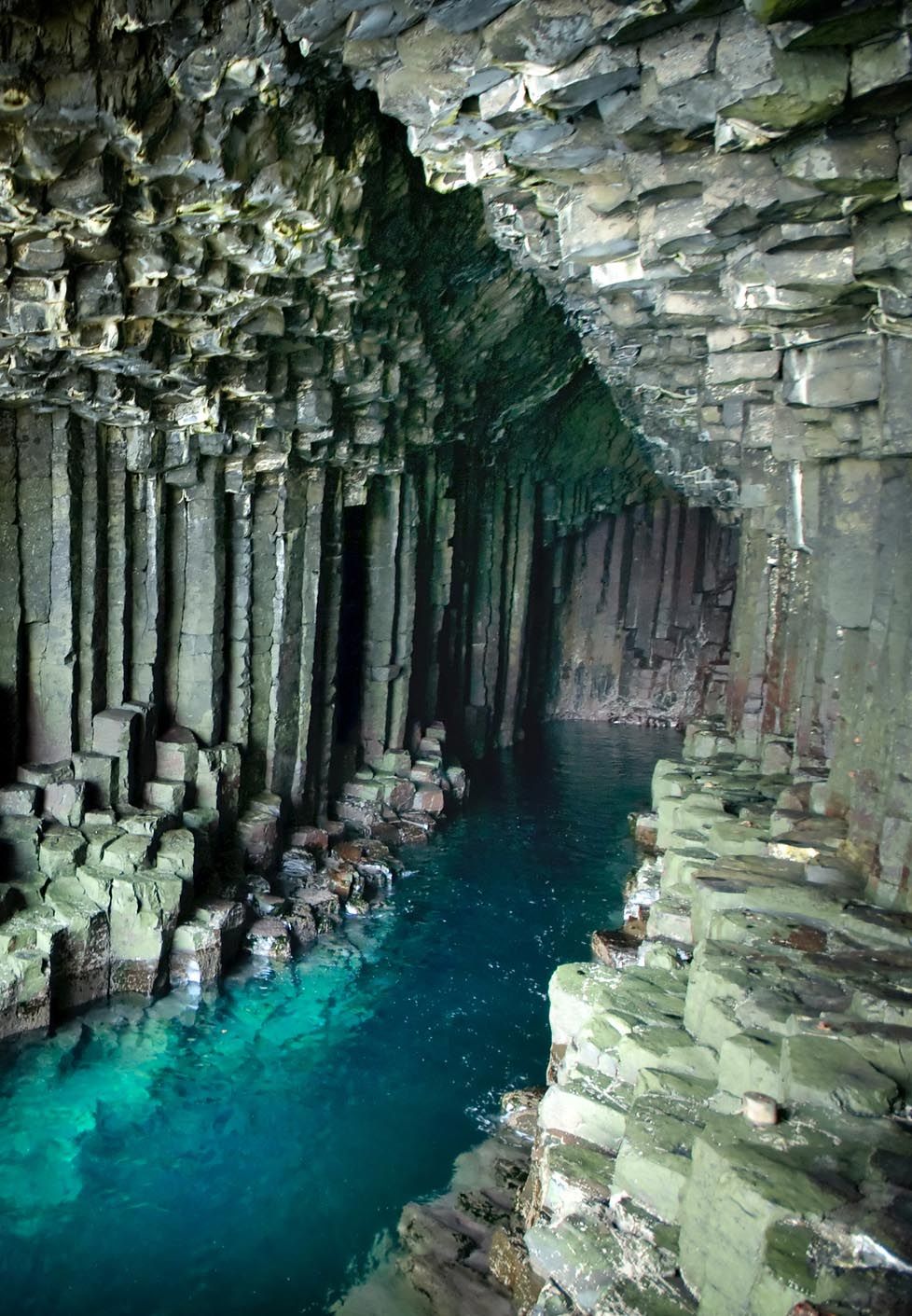
What truly sets Fingal’s Cave apart is its remarkable acoustic qualities. The cave’s structure allows the waves of the Atlantic Ocean to reverberate and create an ethereal, melodic resonance within its depths. The sounds produced by the crashing waves against the basalt columns have earned Fingal’s Cave the nickname “the musical cave.” This natural symphony has inspired musicians and composers throughout history, including renowned classical composer Felix Mendelssohn.

One of the earliest literary figures to be captivated by Fingal’s Cave was the Romantic poet John Keats. In his poem “Staffa,” Keats describes the cave’s mystical allure, using vivid language to convey its grandeur and otherworldly atmosphere. His words bring to life the echoes that resound within the cave and the sense of wonderment experienced by those who enter its dark chambers.
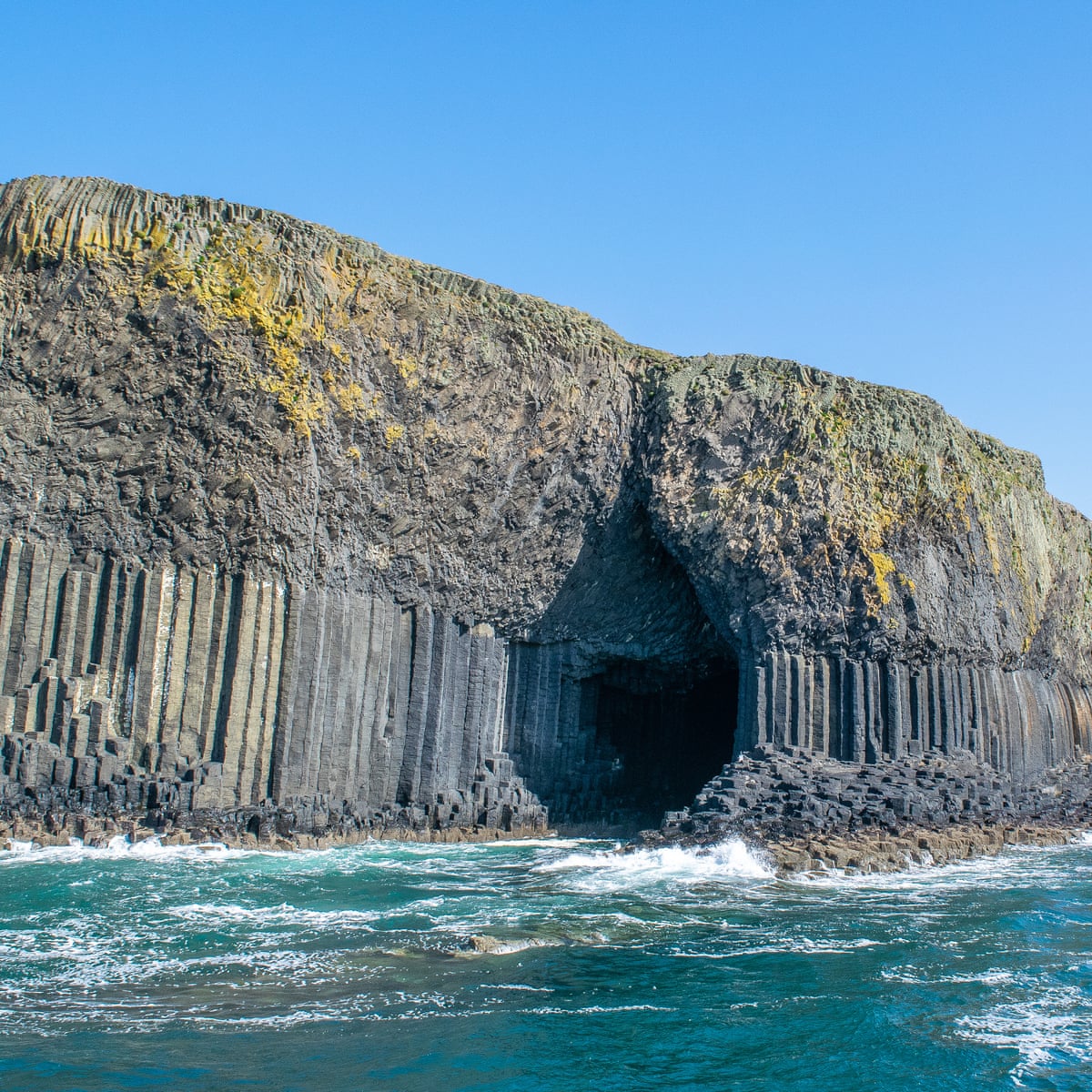
Fingal’s Cave has also found its place in the world of literature through the works of renowned French author Jules Verne. In his novel “The Mysterious Island,” Verne transports his characters to the mythical island of Staffa, where they explore the enigmatic depths of Fingal’s Cave. Verne’s vivid descriptions ignite the reader’s imagination, immersing them in the cave’s beauty and intrigue.

In the realm of music, Fingal’s Cave has inspired numerous artists and bands, including the legendary British rock band Pink Floyd. Their instrumental track “Set the Controls for the Heart of the Sun” features an otherworldly soundscape that draws inspiration from the cave’s natural reverberations. The music takes listeners on a sonic journey, echoing the sense of mystery and exploration associated with Fingal’s Cave.
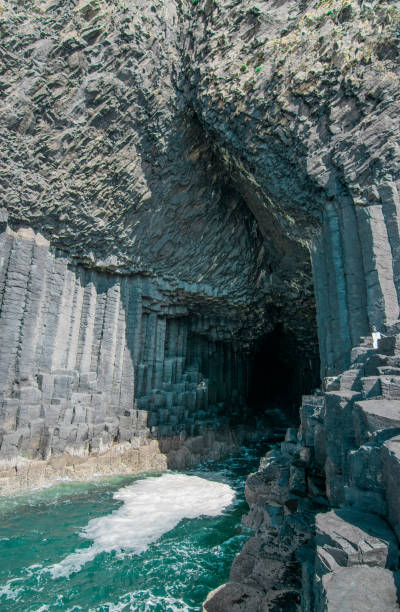
Today, Fingal’s Cave continues to attract visitors from around the world, drawn by its unique geological features and the powerful emotions it evokes. The cave’s breathtaking beauty and its ability to inspire artists, poets, and musicians highlight the enduring impact of nature on human creativity. Fingal’s Cave serves as a reminder of the profound connections between art and the natural world, a testament to the timeless inspiration that can be found within the depths of the Earth.
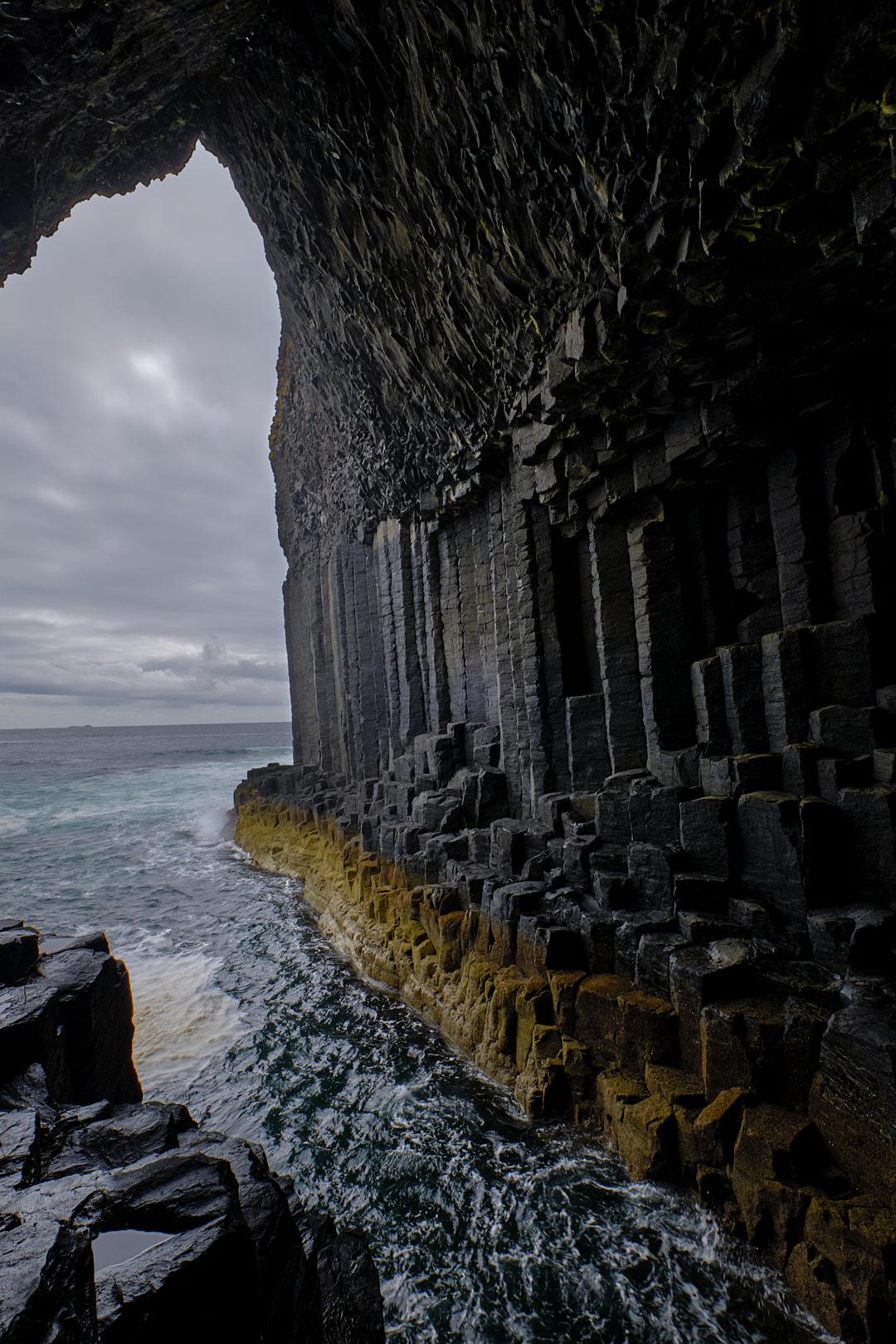
Fingal’s Cave stands as one of the most extraordinary natural wonders on the island of Staffa. Its hexagonal basalt columns and mesmerizing acoustics have fueled the imagination of creative minds throughout history. From the Romantic poet John Keats to visionary author Jules Verne and iconic musicians like Pink Floyd, Fingal’s Cave continues to leave an indelible mark on the artistic landscape. As visitors step into the depths of this magnificent cave, they are transported to a realm where nature’s beauty and human creativity intertwine in harmon





